“We face each other without terms or convenient words, with nothing to assure us about the meaning of the movement that carries us toward each other. We have to invent, from A to Z, a relationship that is still formless, which is friendship.”
Currently on view at the A4 Arts Foundation is Lindokuhle Sobekwa and Mikhael Subotzky’s exhibition, Tell It to the Mountains. The presentation brings together two photographers and friends in a dialogue around ideas of rootedness, home and belonging.
Thinking about friendship under the rubric of the common, the commune and communion, author Jackie Wang proposes that friendship is how we begin to find each other. This, of course, speaks to the very personal and intimate relationships between us but also speaks to the kinds of relationships where we think together, make together and travel together.
Here is an idea — friendship as a form of life — proposed by Wang, elaborating further that in this state, “we can communicate and if it pleases us, we can find each other and become more powerful.”
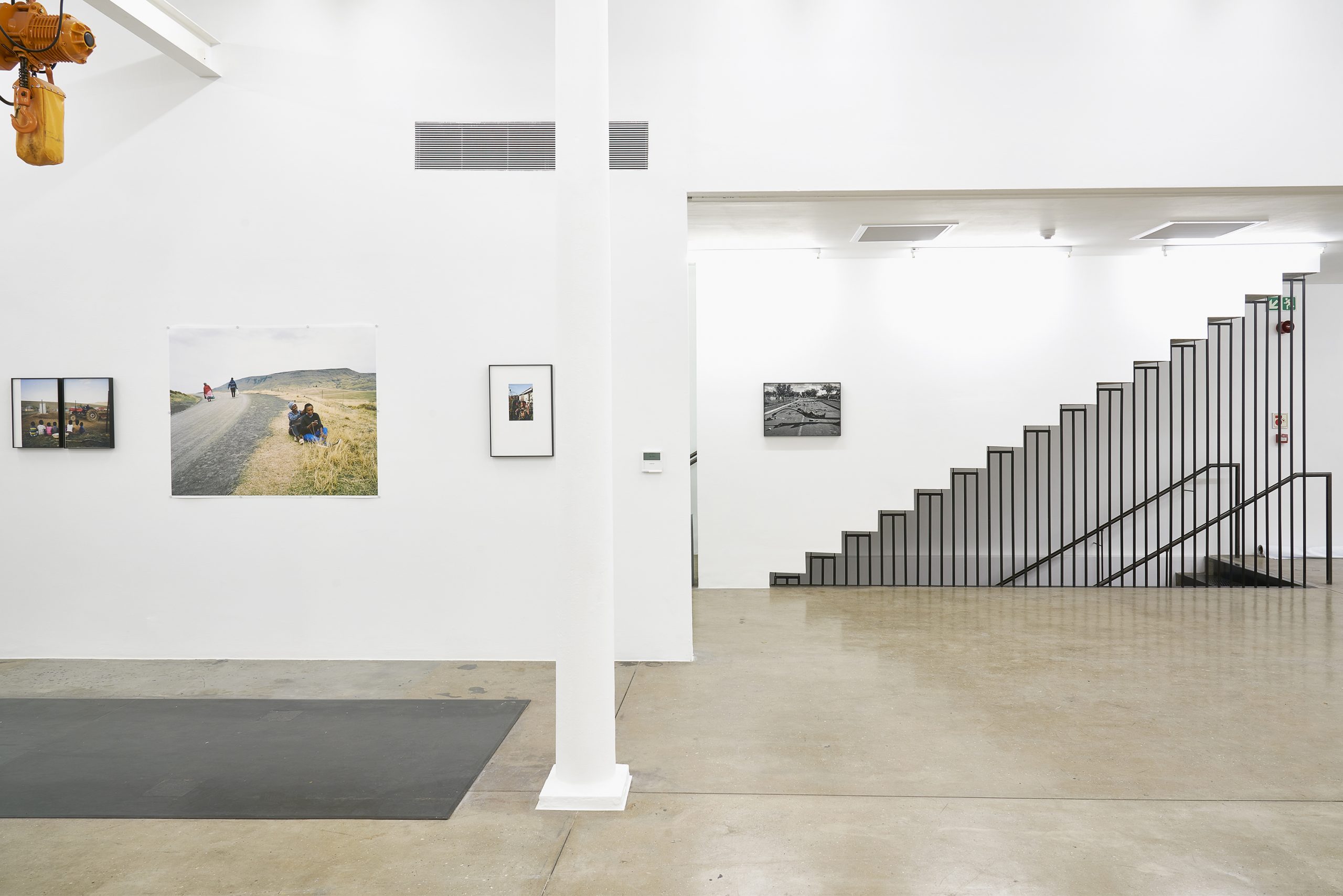
Lindokuhle Sobekwa and Mikhael Subotzky, Installation view of Tell It to the Mountains, 2021.
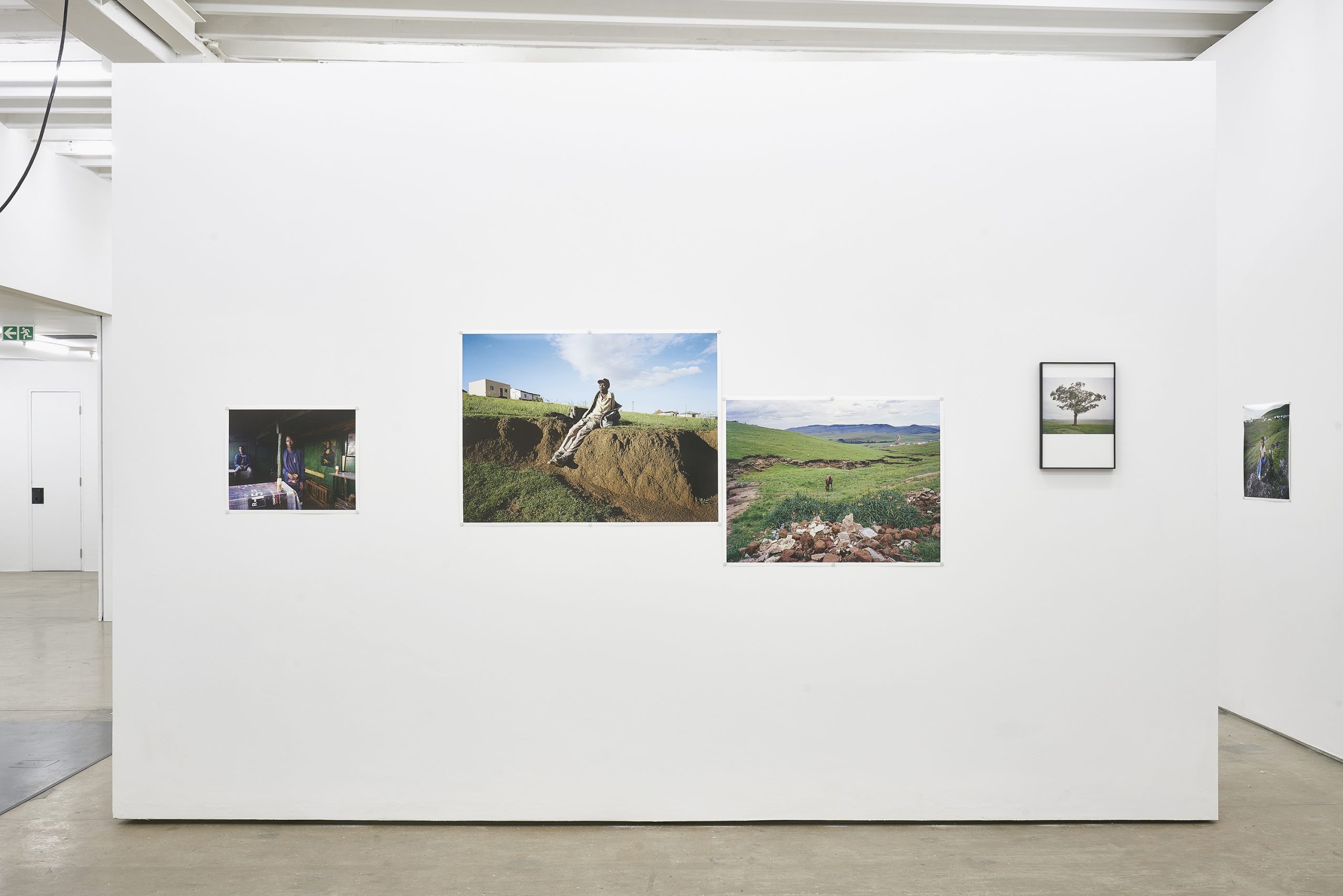
Lindokuhle Sobekwa and Mikhael Subotzky, Installation view of Tell It to the Mountains, 2021.
This sense of communion seems to be the very philosophy of the exhibition — it’s not just the relationship between Sobekwa and Subotzky that is of interest or their relationship with those whose stories they document, it is also about their relationship with South African artists who have helped build our photographic tradition.
It is fitting then that Tell It to the Mountains begins with three photographs by Ernest Cole, Santu Mofokeng and David Goldblatt. In each of their photographs, bodies are captured in motion – moving away from and towards something.
Once again, the idea of communion is evident through the interactions between the artists and other collaborations in music — through Nduduzo Makhathini’s musical score which accompanies Sobekwa’s series, I Carry Her photo with Me (2017 – ongoing) — and in writing, with contributions by Khanya Mashabela, Sean O’Toole, Lucienne Bestall, Sara de Beer and Thembinkosi Goniwe.
Finally, there is a shared communion between the artists and us as the viewers who step into the exhibition space and are moved by a strange shift through hospitality and generosity of the artists. Throughout all of this, friendship is a form of life… because why are we here, if not to help each other through?
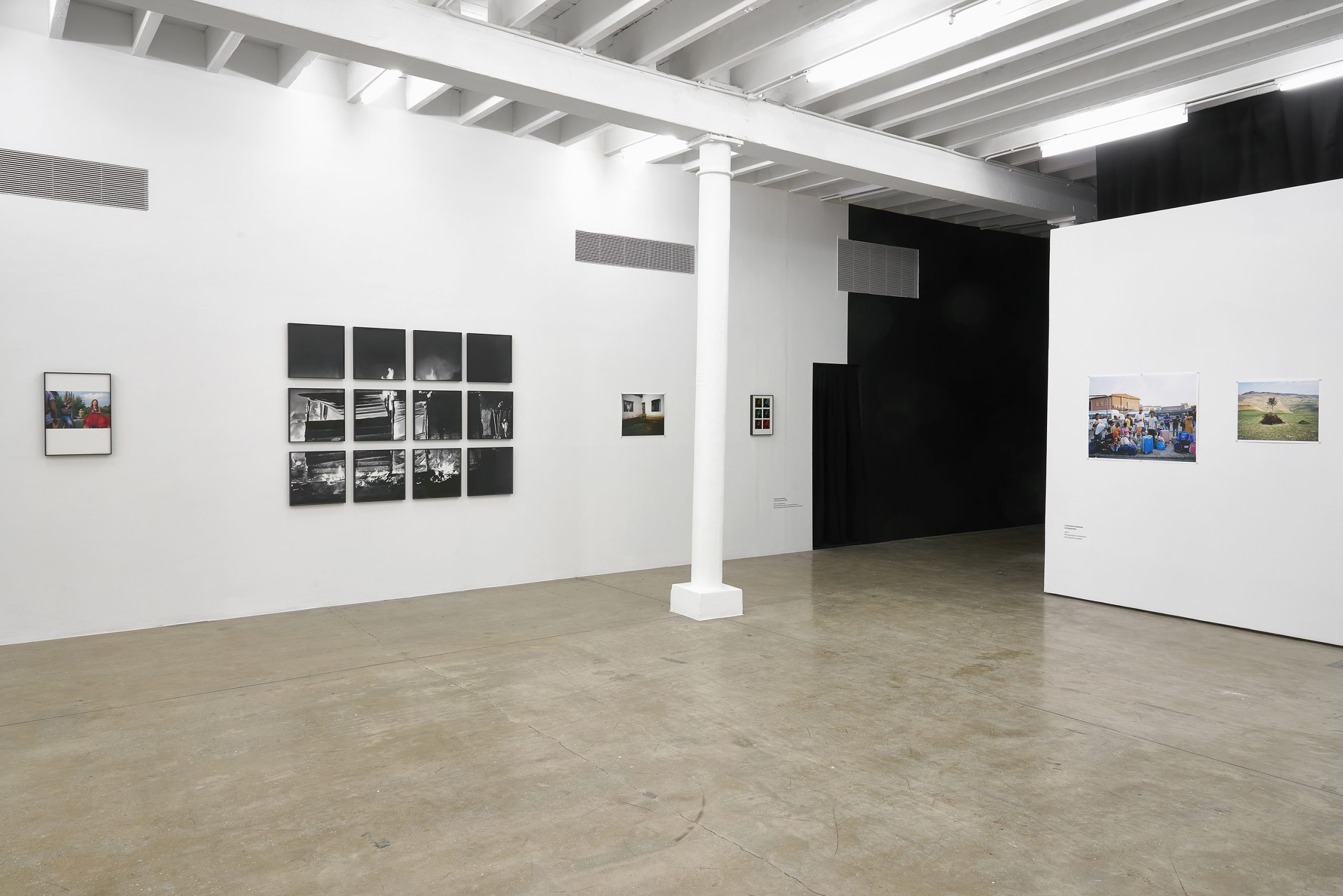
Lindokuhle Sobekwa and Mikhael Subotzky, Installation view of Tell It to the Mountains, 2021.
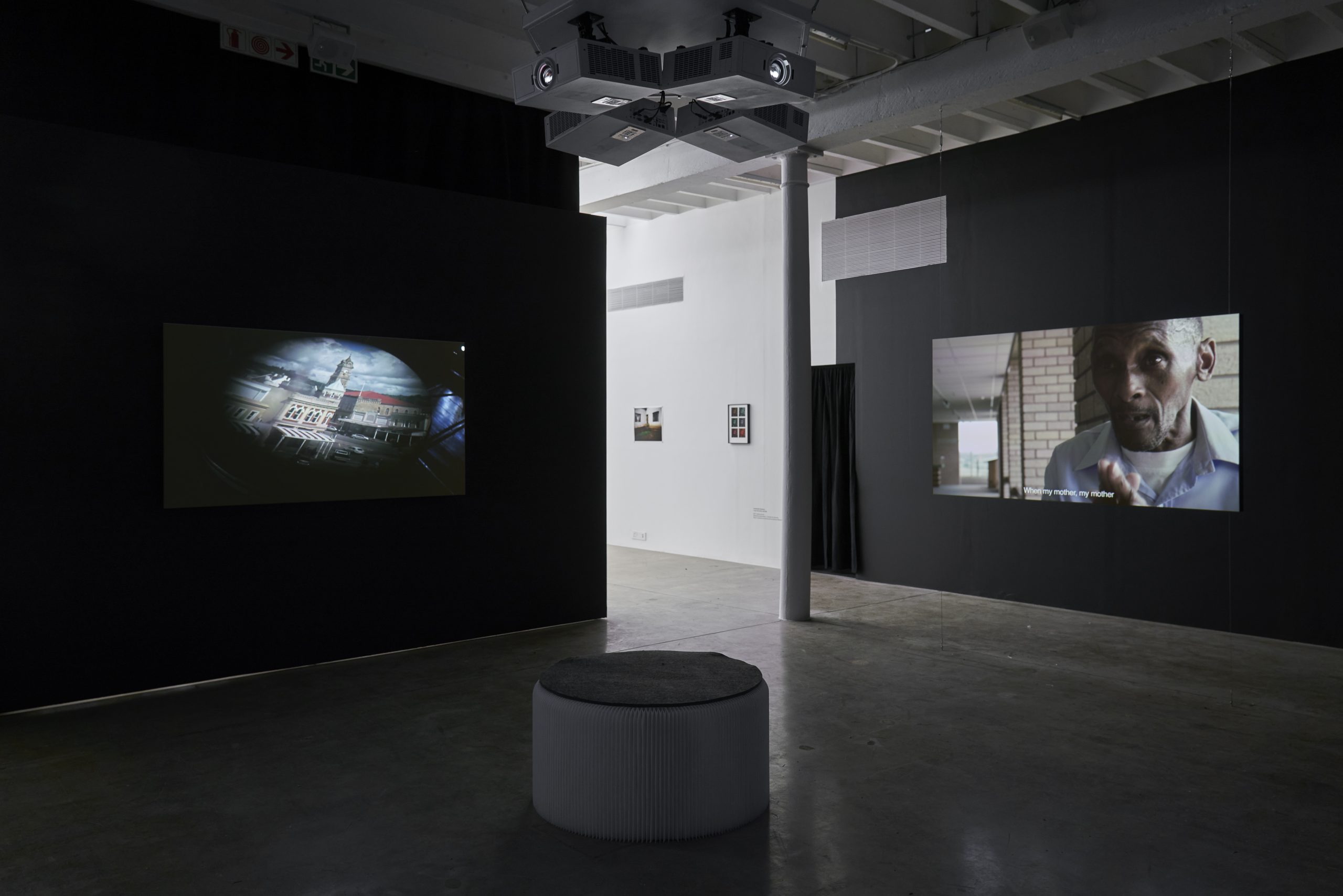
Mikhael Subotzky, Moses and Griffiths, 2012
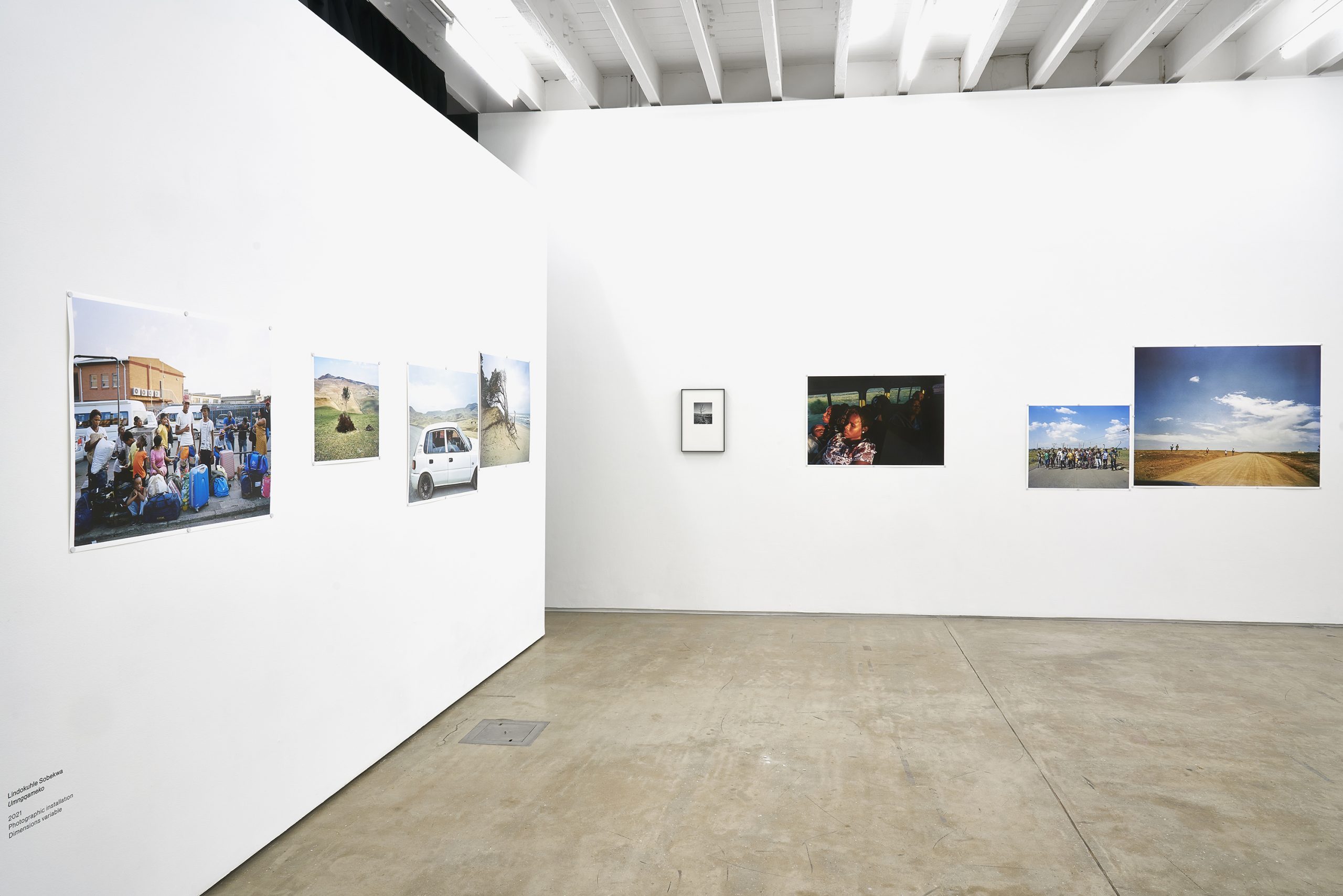
Lindokuhle Sobekwa and Mikhael Subotzky, Installation view of Tell It to the Mountains, 2021.
While Sobekwa reaches into his personal archive to collage a language around his practice, Subotzky contemplates the past through the specificity of Makhanda — previously Grahamstown — through a historical reflection with his film Moses and Griffiths (2012).
In Moses and Griffiths, which is a portrait of two buildings and two men in Grahamstown, a small South African town with a strong English colonial legacy, Subotszky meditates on relations between different aspects of self and how each relates to written and told histories.
Moses Laman and Griffiths Sokuyeka, offer up narratives of place where official accounts of histories are juxtaposed and intertwined through discord.
Through careful observation, both Sobekwa and Subotzky signal towards the complexities that envelope our relationship with the past and signal to what architect and novelist Lesley Lokko described in her text, The Past is a Foreign Country, as, “the relationship between ‘home’ and ‘away’, between ‘roots’ and ‘routes’ and between ‘origin’ and ‘destination’”.
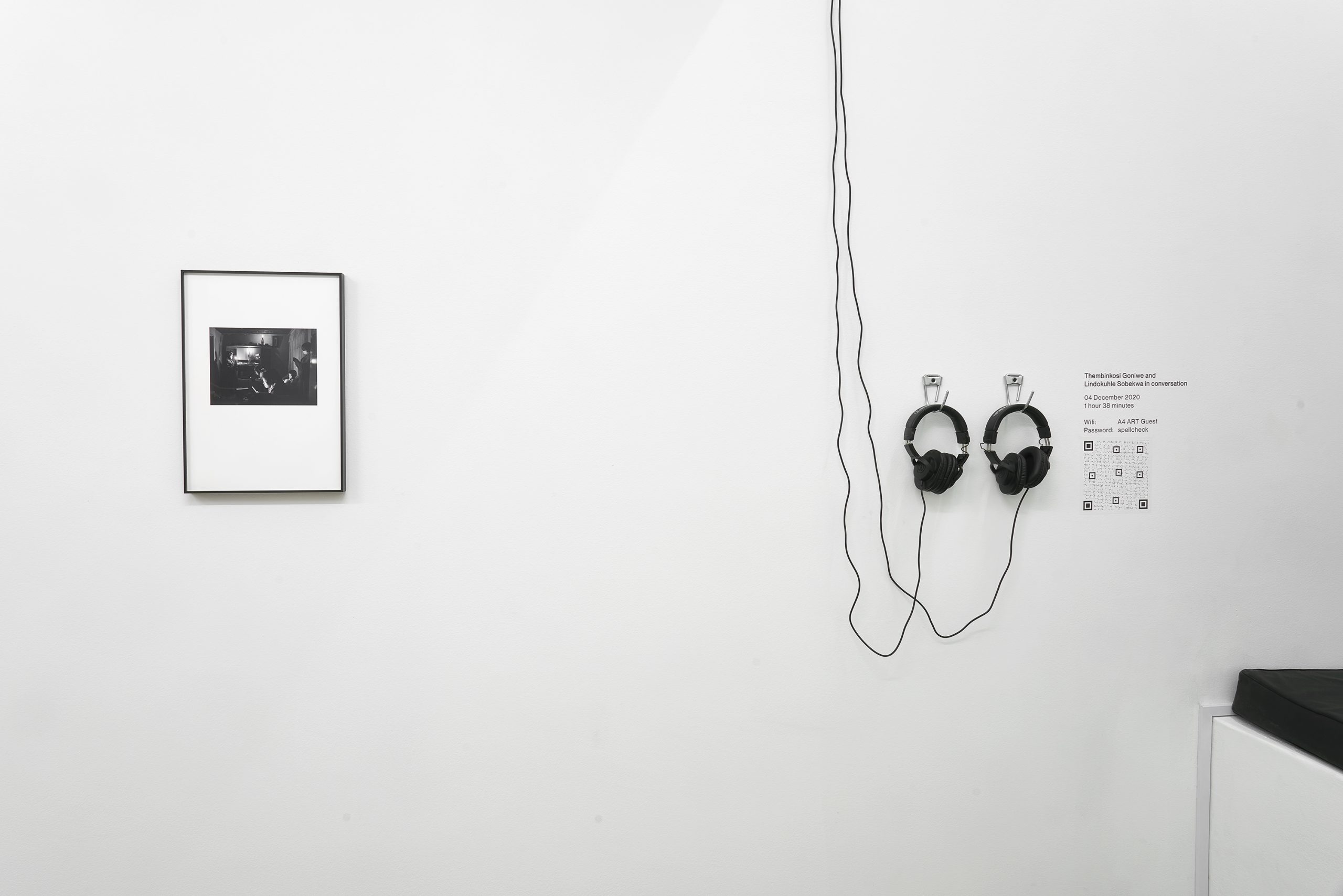
Lindokuhle Sobekwa and Mikhael Subotzky, Installation view of Tell It to the Mountains, 2021.
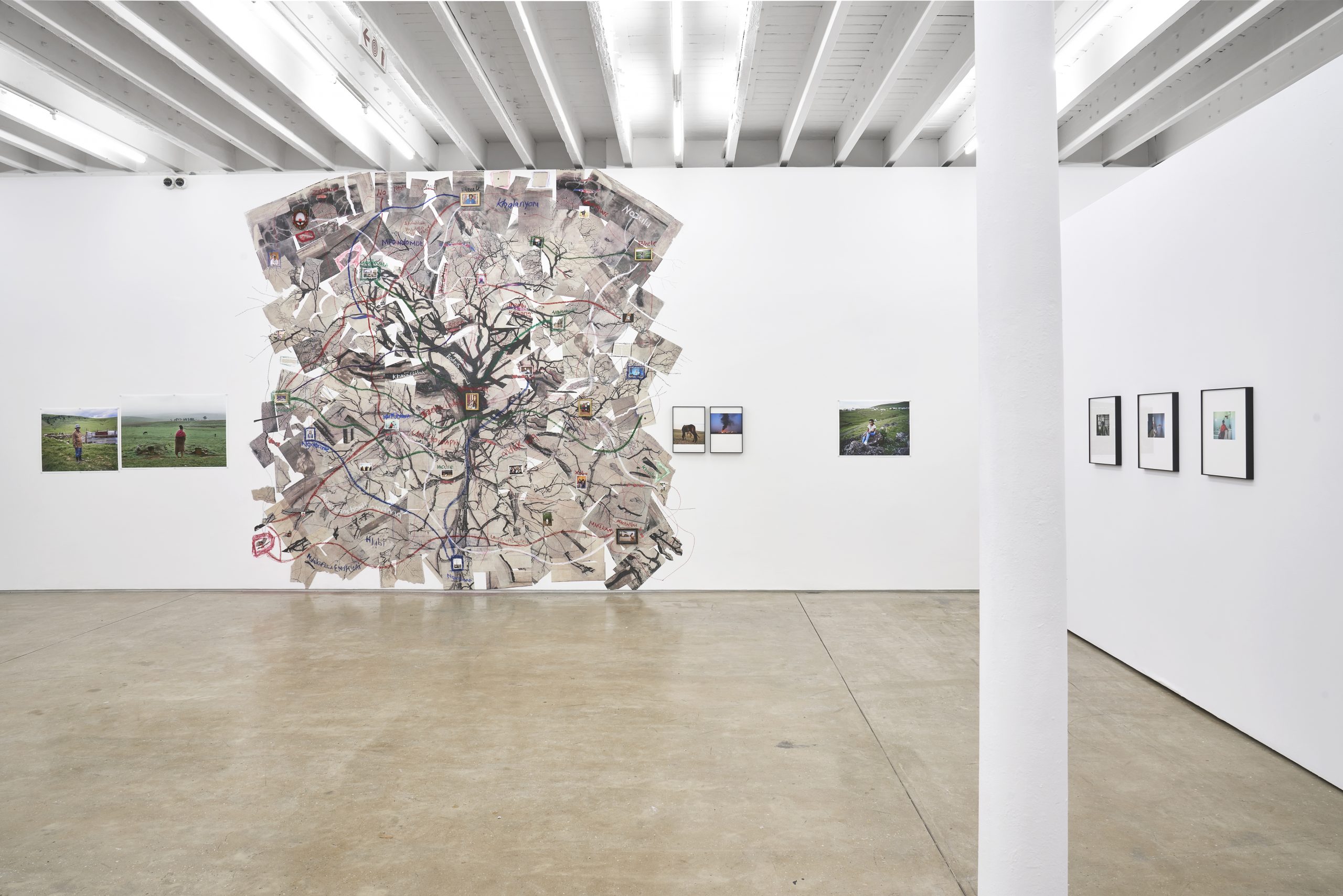
Lindokuhle Sobekwa, Mthimkhulu II within the installation ‘Umngqameko’, 2021.
Tell It to the Mountains is a meandering conversation through a meditation on the idea of a family tree and the horizon. The horizon, in particular, speaks to an unstable place of projection that frustrates the fidelity of a singular line and the singular perspective. What happens when we look at the horizon as it is changing?
In Sobekwa’s practice, this sense of moving towards and away is gestured through the work Umnqhameko (2021) which speaks to ties and bonds as well as distances that make it impossible to “reach”. In this sense, the horizon becomes a trajectory of speculation.
It is unreachable and therefore disorienting but at the same time has the potential to function as a tool for navigation and spatio-temporal reorientation. We know where we are because we can see what is ahead of us.
The exhibition title Tell It to the Mountains is a provocation with multiple resonances — ‘spread the word, utter it into the unbounded landscape, speak your truth…’ For James Baldwin, whose seminal 1953 novel, ‘Go Tell It on the Mountain’, inspired the title, the journey is a self-reflexive one: “Go back to where you started, or as far back as you can, examine all of it, travel your road again and tell the truth about it. Sing or shout or testify or keep it to yourself: but know whence you came.”
Tell It to the Mountains allows a reading of Sobekwa and Subotzky’s practices through the philosophies of proximities and distances — to older works, to old narratives, to each other — where the intimacy of friendship and philosophy is deeply intertwined and where philosophy, in its very name, ‘philos’, includes all risks and excesses of proximities.
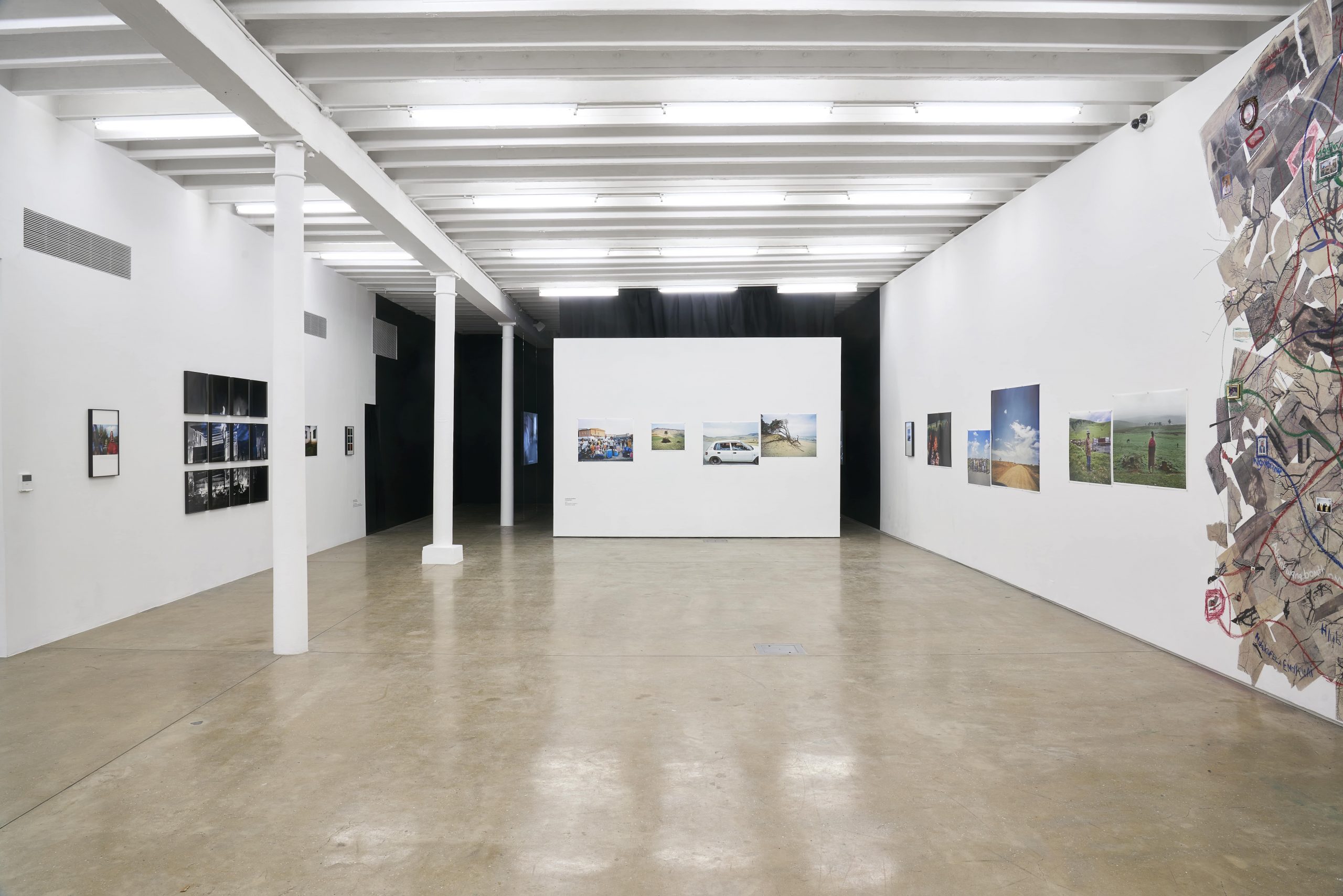
Lindokuhle Sobekwa and Mikhael Subotzky, Installation view of Tell It to the Mountains, 2021.



















































